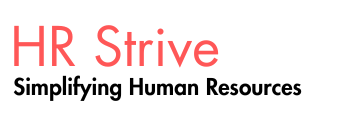Source: SHRM Online Readling Materials
Communicators are perceived as impactful for a variety of reasons. Some factors may be difficult to create or control, such as status in the organization or physical attributes. But the most potent ways to have impact are available to all determined communicators: projecting credibility and creating an effective presence or physical image.
A communicator's credibility clears away much of the initial
static or "noise" in the communication process. The audience is more
willing to listen and to believe. Perceived credibility involves building a
reputation for expertise, reliability, and integrity.
Engaging with an audience requires supporting your message
and your credibility with a physical presence that is appropriate and engaging.
Impactful communicators use their words, their bodies, and their voices as an element
of the message. This includes:
· Posture and movement- maintaining an erect but relaxed posture, moving slowly, following and mirroring the posture of audience members if appropriate.
· Gesture using hand movements to emphasize key points, but not overusing gestures
or using them at the wrong time.
· Eye contact-establishing soft (not piercing) contact with the eyes of audience
members, shifting gaze slowly to include all members of the audience (not
picking one spot or person to engage, not letting the gaze dart nervously about
the room).
· Vocal qualities- speaking clearly, loudly enough to be heard, and at a reasonable
speed. Varying speed and volume in a way that supports the message can avoid
creating tedium.
The major enemies to presence are falseness and nervousness.
Falseness can derive from assuming a manner and personality
that are so distant from your own that they interfere with your ability to
connect directly with the audience. It can also derive from dishonesty-lying
about facts, or avoiding answering questions.
Nervousness in itself is not problematic. Most people are
nervous in speaking situations, and most audiences forgive that. A prolonged
state of nervousness tends to be contagious, however. The audience becomes
uncomfortable and perhaps skeptical. It's a good practice to identify what you
do when you feel nervous and to develop strategies for blocking these habits.
If your speech tends to speed up when you're nervous, practice conscious
breathing and build pauses into your delivery. Practice speaking in informal
situations without using interjections such as "um" or introducing
comments with self-deprecating remarks ("I may be wrong here, but ...
"). If you move your hands nervously, fold them together, or place them on
a tabletop.
When looking at physical and vocal cues in communication, it
is important to take neurodiversity into consideration. For example,
individuals on the autism spectrum or those diagnosed with dyslexia, ADHD
(attention-deficit/hyperactivity disorder), dyspraxia, or social anxiety
disorders may not exhibit the same social cues as other people. If such cues
indicate that there may be a miscommunication present, it is important to
recognize when appropriate accommodations might be needed and to verify that
messages are being sent and received accurately. This may also be true for
individuals from different cultures, who may have different norms with regard
to cues such as personal space and eye contact or gestures. Adopting a flexible
approach to communications is a sound strategy, which may mean allowing some
leeway in method and medium. It is also important to provide employees who have
different perspectives with the opportunity to learn and use social skills and
practices common in the organization. Providing these accommodations isn't
always easy, but incorporating this flexible approach into the culture of HR
and the organization can help nurture talent and generate benefits for the
organization.
Evaluating
the Effectiveness of Communication
Communication
should not be a formulaic activity, performed only because it is expected or
because it attracts attention. The point of communication is to initiate or
support action. If the outcome does not advance the objective, the communication
has failed.
Significant
communication events should be evaluated as soon as possible to identify
strategies that worked and things that could be improved:
·
Was
the audience analysis complete and on target?
·
Did
the audience react as anticipated?
·
What
points did they seem most or least interested in?
·
Where
did they get confused?
·
Where
were they most engaged? What engagement tactics worked and which didn't?
·
How
could feedback mechanisms be improved? Signs of effective communication within
your HR team and within the organization could include:
·
High
levels of engagement reported in employee surveys.
·
High
levels of retention.
·
Positive
comments on the organization's social media channels.
·
Effectiveness
of teams in meeting their commitments and department budgets and schedules.
·
High
levels of collaboration.

No comments:
Post a Comment